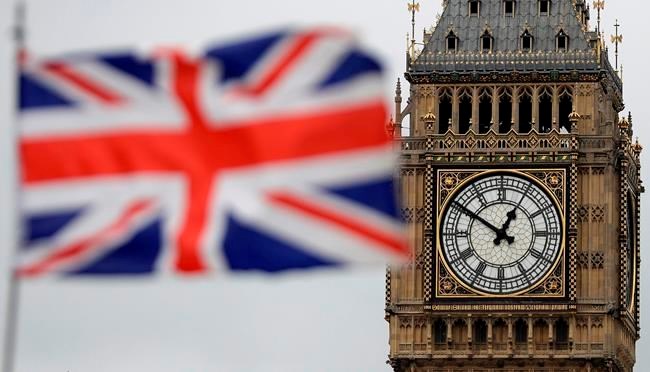England, Scotland and Ireland are earnestly improving tourism infrastructure for 2018, adding worthwhile exhibits to well-known sights and investing in new experiences for travellers.
Read up on the latest developments to make the most of your time in the isles.
Major changes are taking place at some of London’s most visited sights.
At Westminster Abbey, a medieval balcony that’s been closed off for 700 years will open this summer as the Queen’s Diamond Jubilee Galleries, featuring a collection of artifacts from the Abbey’s rich history, as well as breathtaking views of the abbey interior (expect timed-entry tickets).
In the Mayfair neighbourhood of London’s West End, the museum formerly called the Handel House — where composer George Frideric Handel lived for decades — was renamed the “Handel & Hendrix in London” in 2016, as the museum now includes the recently restored former apartments of rocker Jimi Hendrix, who once lived next door to Handel’s old digs. The exhibit juxtaposes the lives and lifestyles of these two long-haired musicians with a flair for decadence.
London’s Courtauld Gallery, renowned for its Impressionist paintings, will close this summer for renovation (and remain closed until 2020).
Just across the Thames, the Tate Modern’s new Switch House (a 10-storey brick twisted-pyramid annex) is now in full swing with rotating exhibitions, performance art, cafés and a terrace with stunning views.
And across town, the Victoria and Albert Museum has added 11,840 square feet of gallery space, along with a new entrance and welcoming courtyard.
Outside of the city centre at Queen Elizabeth Olympic Park, visitors can descend the futuristic Orbit tower via a thrill added in 2016: the world’s longest, tallest transparent tunnel slide, measuring 177 metres with corkscrew turns.
Meanwhile the skyline on the city’s eastern edge is still evolving quickly — new and oddly shaped skyscrapers on the horizon include the “Scalpel,” the tall and twisty Baltimore Tower, the 50-storey “Vase,” the 67-floor “Spire” and, right next to the existing “Gerkin,” the new… “Can of Ham.”
London’s transportation scene continues to change. Uber is in the midst of a legal challenge after Transport for London decided not to renew its licence; it could cease operation at any time.
Meanwhile, starting in December, a new train line, the Elizabeth line, will run right through the city centre — with stops at several Tube stations — and zip travellers from Heathrow Airport to Paddington Station in just 25 minutes.
Across Britain, new museums highlight the diversity of its history. In Stratford-upon-Avon, Shakespeare’s Schoolroom and Guildhall (which opened in 2016) showcases a circa-1420 guild headquarters and the very classroom where Shakespeare was a student, where visitors can try a quill pen.
The British Music Experience, in its new permanent Liverpool home, tells an immersive story of British music from 1945 until today.
And at Durham’s impressive cathedral, the new Open Treasure exhibit displays rare artifacts from the cathedral treasury and monks’ library.
In Portsmouth, on England’s south coast, the 16th-century warship Mary Rose is completely dried out, preserved and on display after 35 years of conservation work.
The town’s D-Day Museum is slated to reopen this spring with exhibits incorporating first-person stories from D-Day and the Battle of Normandy. (The museum also plans to restore the last surviving D-Day landing craft in time for the 75th anniversary in 2019.)
Up north in Edinburgh, the Scottish National Gallery is undergoing a major renovation, with plans for expanded gallery space and a grand entrance from Princes Street Gardens.
In the meantime, certain exhibits and paintings might be out of view.
In Glasgow, the original Willow Tea Rooms on Sauchiehall Street — the only surviving tearooms designed inside and out by Art Nouveau architect Charles Rennie Mackintosh — will reopen this year with a new visitors centre, a restored interior based on Mackintosh’s original design and exhibits marking the 150th anniversary of his birthdate.
Across town, however, the star attraction at Glasgow’s Kelvingrove Museum, Salvador Dalí’s Christ of St. John of the Cross, is on the road until 2020.
The Isle of Skye, just off Scotland’s west coast, is bursting with tourism, which means hotel rooms are booking up six or more months in advance, and restaurants are turning away diners without reservations. Travellers should book early.
In Ireland, visitors are enjoying two high-tech sights that opened their doors in 2016. Epic: The Irish Emigration Museum tells the story of the Irish diaspora using interactive displays.
The museum also houses the Irish Family History Centre, which helps visitors research their Irish roots.
And the new exhibit at GPO Witness History offers an immersive look at the 1916 Easter Uprising from underneath the General Post Office, which served as the rebel headquarters.
Travellers heading up to Northern Ireland should note that along the Antrim Coast, timed tickets are now required to cross the rickety Carrick-a-Rede Rope Bridge.
But they’re only available in person on the same day, so arrive early before they sell out.
Nearby, at the striking basalt columns of the Giant’s Causeway, the new Clifftop Experience is a three-hour guided trek exploring eight kilometres of the Causeway coast.
And in Belfast, the Titanic museum now offers a half-price ticket sold one hour before closing. But at such an impressive attraction, it’s worth the full-price ticket (about $25 US) to spend more time here.
Britain and Ireland are a work in progress for travellers, and those equipped with the latest information enjoy a better experience.
Rick Steves (ricksteves.com) writes European travel guidebooks and hosts travel shows on public television and public radio. Email him at rick@ricksteves.com and follow his blog on Facebook.



